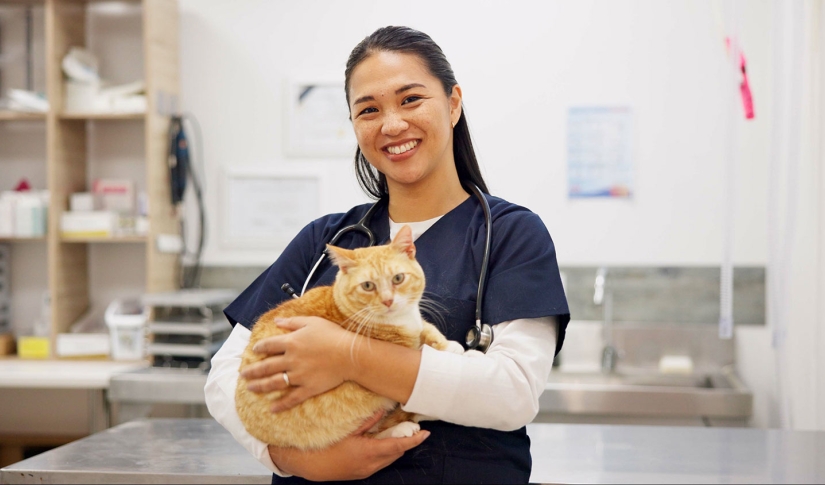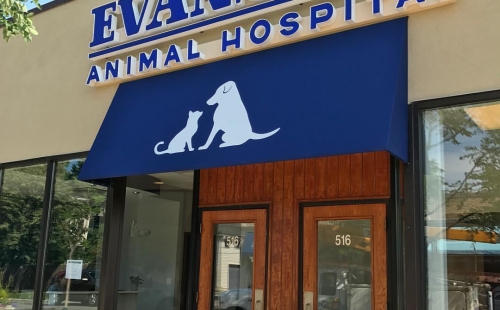Becoming a Cat-Friendly Veterinary Practice

Cats are unique creatures with specialized needs. Unfortunately, many cat owners avoid veterinary visits because they and their pets become so stressed. Cat-friendly veterinary practices work to provide cats space and security so they feel more comfortable with veterinary care and have more access to the services they need to remain healthy.
The Cat Friendly Practice® (CFP) program, developed by the Feline Veterinary Medical Association (Feline VMA [formerly American Association of Feline Practitioners or AAFP]), provides a comprehensive framework that helps veterinary hospitals become more hospitable for cats and cat owners. Let’s look at what the CFP certification involves and the steps you can take to work toward cat-friendly status.
What is the Cat Friendly Practice program?
The CFP program is a global initiative designed to elevate feline care by reducing stress and ensuring more comfortable visits for cats and their caregivers. Cat-friendly veterinary practices seek education to understand cats' needs, causes of stress, and their reactions in stressful situations. Like Fear Free Certification® or AAHA accreditation programs, practices earning a CFP designation meet specific criteria and must provide ongoing evidence to maintain their certification.
Key components of a cat-friendly veterinary practice
Cat-friendly veterinary practices treat cats differently than dogs, because they recognize that each species has different behavioral needs and instincts. Here are a few of the main components:
- Feline-friendly handling — Gentle and respectful handling techniques, including heavy reliance on towel wraps, carrier exams, pre-visit anxiety medications, and avoiding “scruffing,” minimize stress. For severe anxiety or stress, feline-friendly clinics don’t hesitate to use appropriate sedation.
- Feline-friendly waiting areas — Cat-only waiting areas or taking cats to exam rooms as soon as they arrive can eliminate stress caused by exposure to other animals. Cats are highly sensitive and the fewer stimuli, the better they do.
- Feline-friendly cat owner education — Feline-specific education helps cat owners understand cats in general—and their pet in particular—and provides directions for a cat-friendly home setup. Nutrition, environmental enrichment, access to resources, and health care each play a role.
- Feline-friendly preventive care — Preventive care is a critical component of a cat-friendly practice. Annual or semi-annual visits where the veterinary team follows feline-friendly stress reduction techniques keep cats physically and behaviorally healthy.
- Feline-friendly accommodations — Hospitalizations and boarding stays can be stressful for cats, although stress signs may be subtle. Feline-friendly facilities train team members to look for and mitigate anxiety and to encourage natural behaviors with spacious condos and quiet boarding areas with hiding places.
Benefits of becoming a cat-friendly veterinary practice
Implementing cat-friendly veterinary practices benefits everyone, including cats, cat owners, and the veterinary team. Here’s how:
- Better patient care — Examining a stressed cat is nearly impossible. Relaxed, comfortable cats cooperate with exams, so the team can obtain an accurate diagnosis and provide appropriate care.
- Happier clients — Owners of easily stressed and uncooperative cats avoid veterinary visits because they’re stressful for everyone. Clients who see you helping their cat relax appreciate the extra care and develop trust and loyalty to the practice.
- Fulfilled team members — Feline-friendly handling allows veterinary teams to practice compassionate medicine and eliminates struggling with anxious, uncooperative patients. Teams develop valuable skills and enjoy their daily work more.
Steps to becoming a cat-friendly practice
Visit the FelineVMA’s Cat Friendly Practice website to learn more about the standards and certifications required to achieve official cat-friendly status. In the meantime, you can take these steps to reduce feline patient stress:
- Train team members in feline-friendly handling techniques and avoiding scruffing.
- Develop clear communication strategies so clients understand their cat’s feline-specific health and behavioral needs.
- Modify the clinic environment, including separate cat waiting areas or exam rooms, pheromone diffusers, hiding boxes, and visual distractions (e.g., windows, cat TV).
- Invest in cat-friendly inpatient facilities, including larger condos, noise reduction, and exciting enrichment.
- Overhaul your pain management protocols to address acute and chronic feline pain.
- Adjust surgical and anesthetic protocols to address cat safety and stress levels.
- Reconsider your hospital’s stance on non-medically-necessary declawing.
- Adopt modern veterinary practice software to communicate with cat owners promptly and conveniently.
Cat-friendly veterinary practices commit to understanding and addressing their feline patients’ unique needs, enhancing quality of care, improving client satisfaction, and creating a more fulfilling work environment for veterinary teams. The FelineVMA’s CFP certification program advocates for cat health and wellness and advances feline medicine for the good of all cats.




